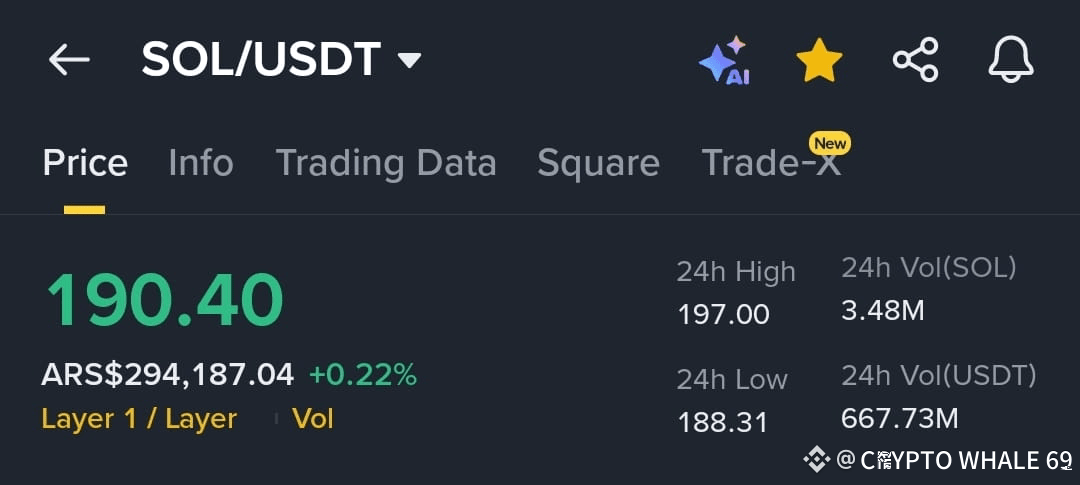
Introduction
In the dynamic world of cryptocurrency, stablecoins have emerged as a crucial component, providing stability and a bridge between the volatile crypto market and traditional finance. Sol USDT is one such stablecoin that operates on the Solana blockchain. sol usdt, known for its high – speed transactions and low fees, offers an ideal environment for Sol USDT to thrive. This article will delve into various aspects of Sol USDT, including its background, features, use cases, benefits, and potential challenges.
Background of Sol USDT
Tether (USDT) is the world’s most widely used stablecoin, pegged to the US dollar on a 1:1 basis. It aims to maintain a stable value, reducing the price volatility commonly associated with other cryptocurrencies. Sol USDT is the version of Tether that exists on the Solana blockchain. The decision to launch USDT on Solana was strategic, as Solana’s technology offers significant advantages over some other blockchains. Solana’s architecture, based on a proof – of – history consensus mechanism combined with proof – of – stake, enables it to handle a large number of transactions per second with extremely low latency. This makes Sol USDT a more efficient and cost – effective option for users compared to USDT on some other blockchains.
Features of Sol USDT
High – Speed Transactions
One of the most prominent features of Sol USDT is the speed at which transactions can be processed. Solana can handle thousands of transactions per second, which means that users can send and receive Sol USDT almost instantaneously. This is a significant improvement over traditional payment systems and even some other blockchain – based stablecoins. For example, in a trading scenario, the ability to quickly move funds in and out of positions can be crucial for taking advantage of market opportunities.
Low Transaction Fees
Another key feature is the low cost of transactions. Solana’s efficient design results in very low fees for executing transactions with Sol USDT. This is especially beneficial for small – scale users and traders who may be deterred by high fees on other platforms. Whether it’s a simple transfer or a complex trading operation, the low fees make Sol USDT an attractive option.
Compatibility with the Solana Ecosystem
Sol USDT is fully integrated with the Solana ecosystem. This means that it can be used in conjunction with a wide range of decentralized applications (dApps) built on Solana. From decentralized exchanges (DEXs) to lending and borrowing platforms, Sol USDT can be seamlessly integrated, providing users with a diverse set of financial services.
Use Cases of Sol USDT
Trading
In the cryptocurrency trading world, Sol USDT plays a vital role. Traders often use it as a stable store of value between trades. When the market is volatile, they can quickly convert their volatile cryptocurrencies into Sol USDT to avoid losses. Additionally, many cryptocurrency exchanges support Sol USDT trading pairs, allowing traders to easily swap between different digital assets.
Remittances
Sol USDT can also be used for cross – border remittances. Traditional remittance services are often slow and expensive, with high fees and long processing times. Sol USDT, on the other hand, can be sent across the globe in a matter of seconds at a fraction of the cost. This makes it an attractive option for people who need to send money to their families or business partners in different countries.
Decentralized Finance (DeFi)
In the DeFi space, Sol USDT is widely used. It can be used as collateral for loans on lending platforms, allowing users to access liquidity without selling their other assets. It is also used in yield – farming strategies, where users can earn rewards by providing liquidity to decentralized exchanges.
Benefits and Potential Challenges
Benefits
The benefits of Sol USDT are numerous. As mentioned earlier, its high – speed transactions and low fees make it a practical choice for various financial activities. The stability provided by its peg to the US dollar gives users confidence in its value. Moreover, its integration with the Solana ecosystem opens up a world of opportunities for innovation and financial inclusion.
Potential Challenges
However, Sol USDT also faces some potential challenges. One of the main concerns is regulatory uncertainty. As stablecoins come under increasing scrutiny from regulators around the world, Sol USDT may face regulatory hurdles that could impact its usage and availability. Additionally, like any digital asset, it is vulnerable to security threats such as hacking and fraud. Ensuring the security of Sol USDT wallets and transactions is of utmost importance to maintain user trust.
In conclusion, Sol USDT is a significant development in the cryptocurrency space. Its features, use cases, and integration with the Solana ecosystem make it a powerful tool for traders, remittance users, and DeFi enthusiasts. While it faces some challenges, with proper security measures and regulatory compliance, it has the potential to continue growing and playing an important role in the future of finance.